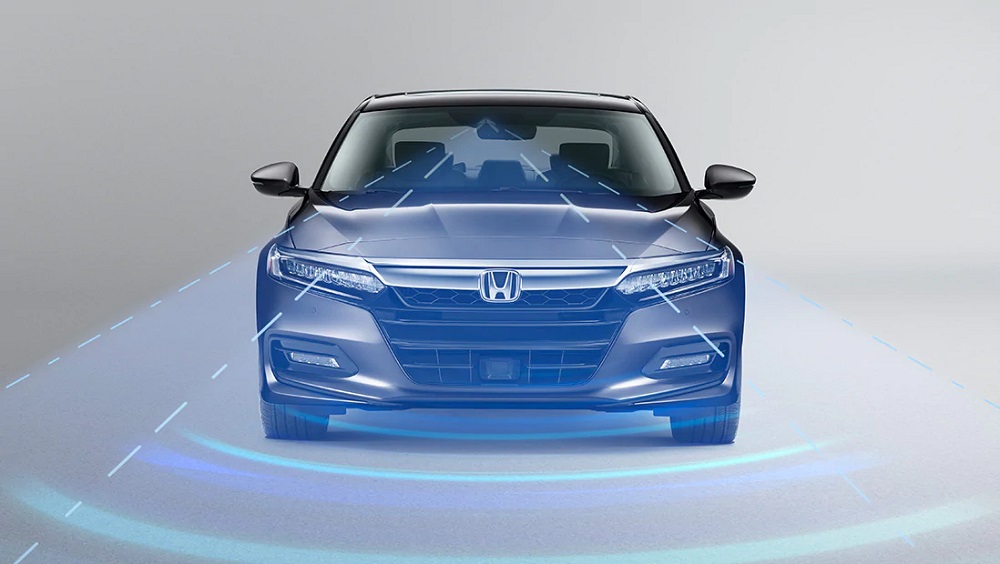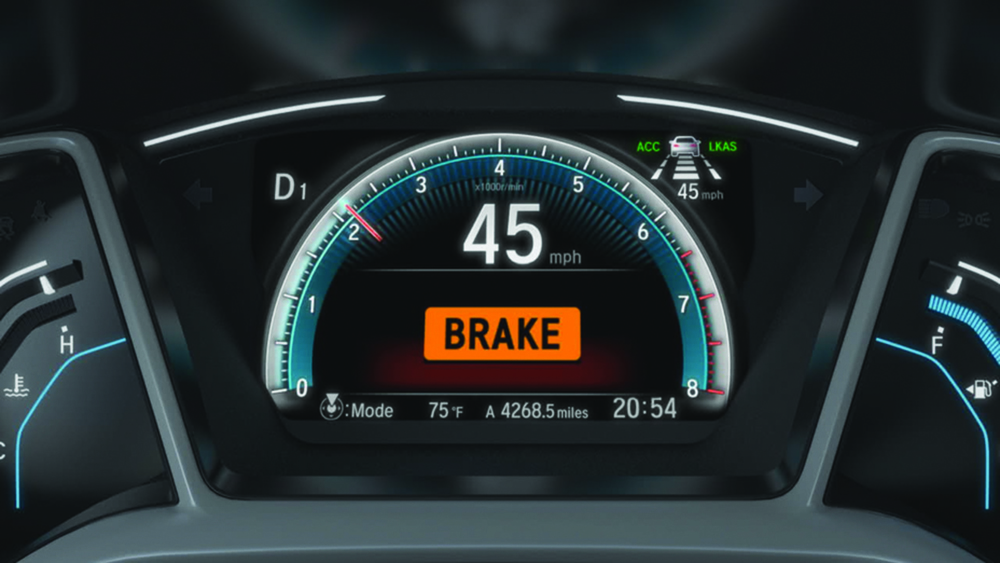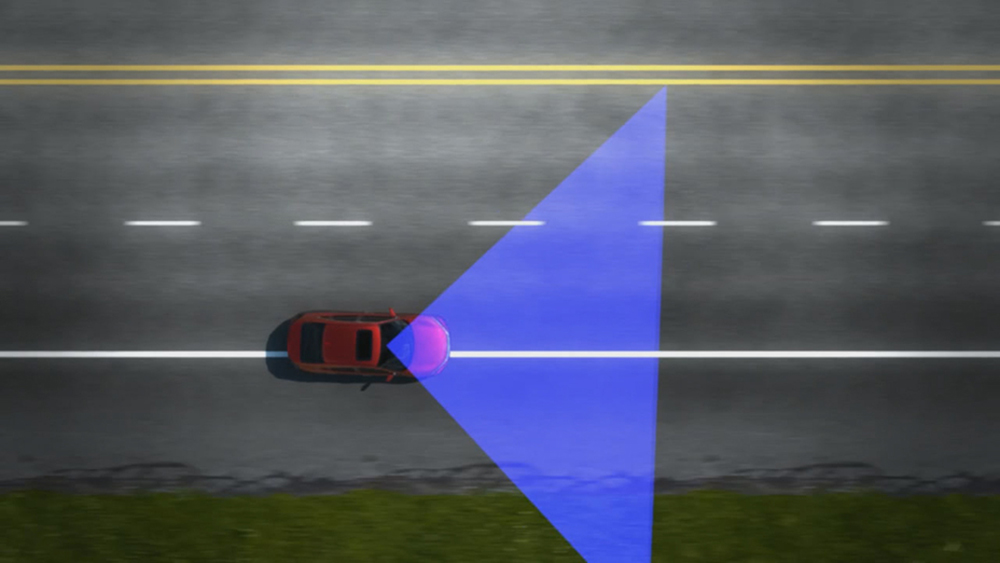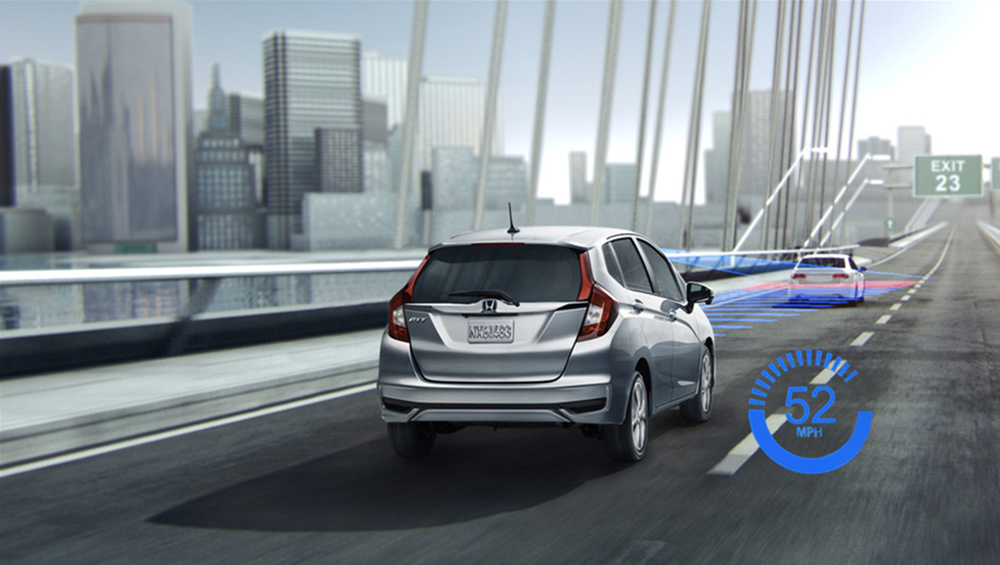
If you’ve shopped for a new Honda at any point over the last few years, you’ve probably heard of Honda Sensing. It’s a suite of safety and driver-assistive technologies offered as standard equipment across virtually all Honda models. But what exactly does Honda Sensing do?
Honda Sensing is made up of five key technologies: Collision Mitigation Braking System, Road Departure Mitigation System, Lane Keeping Assist System, Adaptive Cruise Control, and Traffic Sign Recognition.
Below, we’ll go over what these technologies do in a little more detail.
High Tech: How HondaLink helps you improve your driving skills 
CMBS is Honda’s fancy name for automatic emergency braking. When the system determines a frontal collision is possible, it gives you a visual warning on the instrument panel, makes a beeping noise, and vibrates the steering wheel.
If the system thinks the collision is imminent, it will automatically apply the brakes to help mitigate the impact or potentially avoid it. You can adjust the distance at which the system warns you as well as turn it on or off entirely if it’s too intrusive.

RDM is intended to help prevent you from unintentionally leaving the road. While driving between 45 and 90 mph, on a straight or slightly curved road with clear lane markings, the system may give you a visual alert if you get too close to the edge of the road. It will only do this if the turn signal indicator or windshield wipers are not activated.
Additionally, RDM will vibrate the steering wheel and apply steering torque to help prevent you from leaving the road. If the system thinks that’s still not enough, it will even apply the brakes. As you might imagine, false positives can make RDM somewhat unwelcome, so you have the option to turn it off as well.
Older Models: Even used cars may have Honda Sensing 
LKAS is only slightly different than RDM, and it’s honestly a little confusing that Honda categorizes the technologies separately. While RDM tries to prevent you from leaving the road, LKAS is designed to assist you in staying centered in your lane. It may help to think of RDM as a crash avoidance feature and LKAS as a convenience-enhancing one. Under the same conditions as RDM, it simply applies mild steering torque to help you stay in the middle of your lane.

Regular cruise control is just not good enough these days. ACC uses a radar system on the front of the vehicle and a camera mounted on the windshield to gauge the interval between you and the vehicle detected ahead. It can then help you maintain your set cruise control speed while maintaining a safe following distance.
The standard system can only slow down moderately. If you want your Honda to slow down all the way to a stop and then start on its own, you’ll need to make sure it comes equipped with ACC with Low Speed Follow.

Last but not least, TSR is the simplest of all these features. When possible, it displays road sign information on the driver information interface, or on the head-up display if the Honda is equipped with one. That’s it.
Other Safety Suites: Guide to Toyota Safety Sense
Honda offers a variety of other intelligent safety features across its model lineup, including a blind spot information system, cross-traffic monitor, and automatic high beams. However, these are not part of Honda Sensing, so make sure to look for them if they’re important to you.
Additionally, remember that as much as Honda Sensing tries to identify things like other cars and road signs, there are many factors that can hinder its perceptive capabilities — as with all other such systems offered by other brands. The weather and time of day can cause Honda Sensing to misidentify objects or fail to identify them altogether.
Always have your hands on the wheel and pay attention to the road. Honda Sensing is meant to be a backup for your attention, not a substitute for it.
Kurt Verlin was born in France and lives in the United States. Throughout his life he was always told French was the language of romance, but it was English he fell in love with. He likes cats, music, cars, 30 Rock, Formula 1, and pretending to be a race car driver in simulators; but most of all, he just likes to write about it all. See more articles by Kurt.





